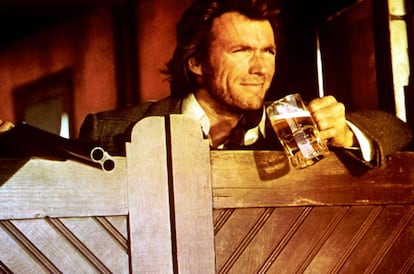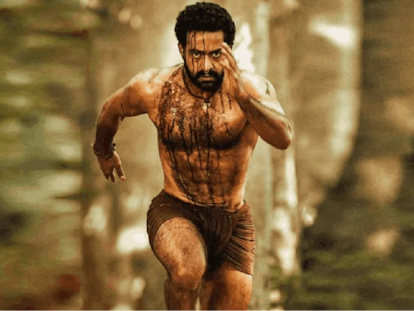10 hidden gems on Netflix for movie lovers
From ‘The Little Match Girl’ to ‘The Last Temptation of Christ,’ the list includes many outstanding works of cinema that you can enjoy right now

To ensure that its subscribers never get bored, Netflix offers countless quality movies to suit all tastes. However, when one explores the service, sometimes it may seem like the suggestions we find are always the same. With that in mind and to help you find your new favorites, we’ve taken it upon ourselves to explore the platform to unearth a few hidden gems.
The Man Between (1953), by Carol Reed.
Four years after his classic The Third Man, Reed returned to a similar space, situation, tone and subtext: a divided, post-World War II city (in this case, Berlin), an atmosphere of espionage, touches of film noir, shady personalities and various shenanigans around the Western and Eastern blocs. Reed’s signature tilted shots, used to convey discomfort, find their climax in the spectacular kidnapping of the leading woman.
Thérèse Raquin (1953), by Marcel Carné.
Without losing a bit of its bitterness, Carné changed the setting of the original novel by Émile Zola from the second half of the 19th century to the 1950s in this portrait of the gray and melancholic life of a woman who, while being married to her sickly cousin, finds the passion she lacks in a tough trucker who visits her fabric store. However, the spark is followed by crime, and then by the remorse and anguish of two human beings headed towards self-destruction.
She’s Gotta Have It (1986), by Spike Lee.
Nola Darling has three lovers, each more vile and possessive than the last – despite the fact that it is them who are the adulterers. Of course, she controls them all, as is clear in a climactic dinner scene in which her point of view is shown through high-angle shots, while the men’s is a low angle, as we see them made smaller by the situation and Darling. The movie is shot in black and white, with a comedic tone and a striking explosion of color in a musical sequence. In 2017, Lee turned his feminist heroine into a television series.
Tokyo Godfathers (2003), by Satoshi Kon.
Kon, a master of anime, created an unusual version of John Ford’s western 3 Godfathers, in which the rustlers who had to cross the desert with an orphan baby are replaced by three homeless people who must search all over the city for the parents of a baby who was abandoned in the garbage. The portrait of the trio of characters – a surly alcoholic, an outgoing transvestite and a lost teenager, shown through flashbacks that explain how they ended up in the streets – is beautiful, tinged with touches of dark comedy and social critique.
Joe Kidd (1972), by John Sturges.
This is a movie full of big names. It’s directed by John Sturges, one of the greats of Western cinema; prestigious novelist Elmore Leonard is the screenwriter, while Robert Duvall plays a formidable villain. And, of course, there is Clint Eastwood, the star and producer, who plays an ex-bounty hunter hired to track down a Mexican revolutionary leader called Luis Chama, a character inspired by Reies López Tijerina, a Texan revolutionary leader from the 1960s.
The Match Girl (1928), by Jean Renoir.
This is a 32-minute medium-length film rarely seen until now, except on specialized channels, and probably the great hidden gem of this list. The Little Match Girl is a free adaptation of Hans Christian Andersen’s story about the loneliness and hardships of a young woman in the cold and the snow of a night in the open. Beautifully shot, the film shines thanks to its particular oneiric style, achieved with artisanal special effects and tricks.
Family Life (1971), by Ken Loach.
In 1967, Ken Loach made an impressive film for TV called In Two Minds. It dealt, in an almost documentary tone, with the mental problems of a young woman, and the link between schizophrenia and her family environment. Four years later he filmed a new version for the cinemas, with a somewhat more conventional narrative but showing the same oppressive environment for the girl: religion, her parents’ pressure to have an abortion, her institutionalization and electroshock therapy. It’s a chilling film.
Yield to the Night (1956), by J. Lee Thompson.
Within minutes, Yield to the Night captures the audience with a variety of angles, fascinating perspectives and the forcefulness of each shot. After the character played by Diana Dors murders a woman in the middle of the street, we are treated to flashbacks with hints of film noir, while in the story’s present a plea is made against capital punishment as we see the days she spends on death row before her execution.
The Red Balloon (1956), by Albert Lamorisse.
At the 1958 Oscar ceremony, the surprise winner of the Best Original Screenplay award was this medium-length, practically silent film, which shows the friendship between a six-year-old boy and a huge balloon he finds in the street. Pascal, the director’s son, walks the streets of autumnal Paris with the childlike spontaneity of one who is willing to do anything to be with his precious treasure.
The Last Temptation of Christ (1988), by Martin Scorsese.
In this adaptation of Nikos Kazantzakis’ novel, which caused a stir upon its release, the double nature of the figure of Christ unfolds in depth to highlight the understandable doubts of someone who, despite his divine status, was also a man. The outstanding cast includes Willem Dafoe as Jesus, Barbara Hershey as Mary Magdalene, Harvey Keitel as Judas and even David Bowie as Pontius Pilate.
Tu suscripción se está usando en otro dispositivo
¿Quieres añadir otro usuario a tu suscripción?
Si continúas leyendo en este dispositivo, no se podrá leer en el otro.
FlechaTu suscripción se está usando en otro dispositivo y solo puedes acceder a EL PAÍS desde un dispositivo a la vez.
Si quieres compartir tu cuenta, cambia tu suscripción a la modalidad Premium, así podrás añadir otro usuario. Cada uno accederá con su propia cuenta de email, lo que os permitirá personalizar vuestra experiencia en EL PAÍS.
¿Tienes una suscripción de empresa? Accede aquí para contratar más cuentas.
En el caso de no saber quién está usando tu cuenta, te recomendamos cambiar tu contraseña aquí.
Si decides continuar compartiendo tu cuenta, este mensaje se mostrará en tu dispositivo y en el de la otra persona que está usando tu cuenta de forma indefinida, afectando a tu experiencia de lectura. Puedes consultar aquí los términos y condiciones de la suscripción digital.
More information
Archived In
Últimas noticias
Most viewed
- Sinaloa Cartel war is taking its toll on Los Chapitos
- Reinhard Genzel, Nobel laureate in physics: ‘One-minute videos will never give you the truth’
- Oona Chaplin: ‘I told James Cameron that I was living in a treehouse and starting a permaculture project with a friend’
- Why the price of coffee has skyrocketed: from Brazilian plantations to specialty coffee houses
- David King, chemist: ‘There are scientists studying how to cool the planet; nobody should stop these experiments from happening’











































